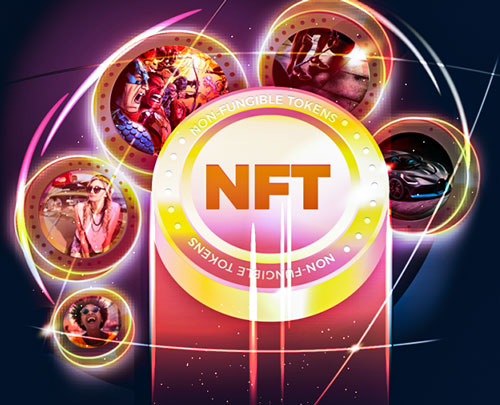
You may not have noticed, but the world has been shaking with a new gold fever for months. Here are just a few facts you may not have heard about.
In early March, the Canadian singer Grimes, more known as Elon Musk’s civil wife, earned
$5.8 million in 20 minutes by releasing her NFT collection. Around the same time, the digital artist Mike Winkelmann, who became famous under the pseudonym Beeple, sold one token for nearly $70 million. Before that, with the help of other NFTs, he made more than $3.5 million.
The drawing of the American artist Banksy (White) worth $95,000 was bought and then burned after being turned into an NFT. The same symbol was then sold at a Sotheby’s auction for $380,000.
So what is NFT?
NFT is a non-fungible token.
A non-fungible token is a digital certificate of ownership that says you are the sole owner of an original digital object, such as a GIF or a piece of digital art. This token can represent a piece of digital art of any value: a drawing, a gift, a file, even your brain – as long as it is digitized and stored electronically. Tokens can be compared to paper money, which is equivalent to concrete gold. Only they are not physical and intangible: they exist only in the format of a digital code.
And the “non-fungible” in the definition stands for the fact that NFT is unique and cannot be replaced by something else.
They are interchangeable: if you exchange one bitcoin for another, you will end up with the same result. If you exchange one NFT for another, you end up with something completely different.

Where is NFT stored?
Most tokens are part of the Ethereum blockchain.
Blockchain is a chain of information blocks. They contain records of transactions made inside databases located on many computers at the same time. Each such unit is interconnected with others.
Etherium is a cryptocurrency, similar to Bitcoin or Ripple. But its blockchain (database where information is stored about the digital currency) also supports NFT. At the same time, each token has additional digital marks that make it unique and distinguished from the “coins” of Etherium.
Why buy NFT?
When you buy NFT, you get the exclusive right to the content contained in it. You become its rightful owner. The process is actually a lot like collecting works of art.
Even a post on social networks can become a product you can buy with NFT. For example, the billionaire Jack Dorsey, part-time co-founder and CEO of Twitter, recently tried to sell his first tweet in the form of a token. Its cost is already exceeding a couple of millions dollars.
But what is the point of buying NFT if the same tweet is in free access?
Yes, this is a tricky question. Indeed, it is possible to read tweets, view various drawings, download music from the web, copy a digital file repeatedly, even if the token with the unique characteristics of that object belongs to someone else.
However, NFT is meant to give you something quite unique: exclusive ownership of the original digital object (although its creator can still retain the copyright, as in the case of physical works of art).
Let’s compare it with physical collecting: yes, anyone can buy a Monet painting copy or look at its reproduction in the museum. But only one person owns the original.
In digital art, the copy is not inferior to the original. So why do you need the original? Well, it’s all quite simple. From the perspective of a buyer, you can invest money into digital art, which you think might only get more expensive with the time.
So are these tokens useful, and will they stick around? These are the questions that will be answered only after NFTs will be proven by time.





